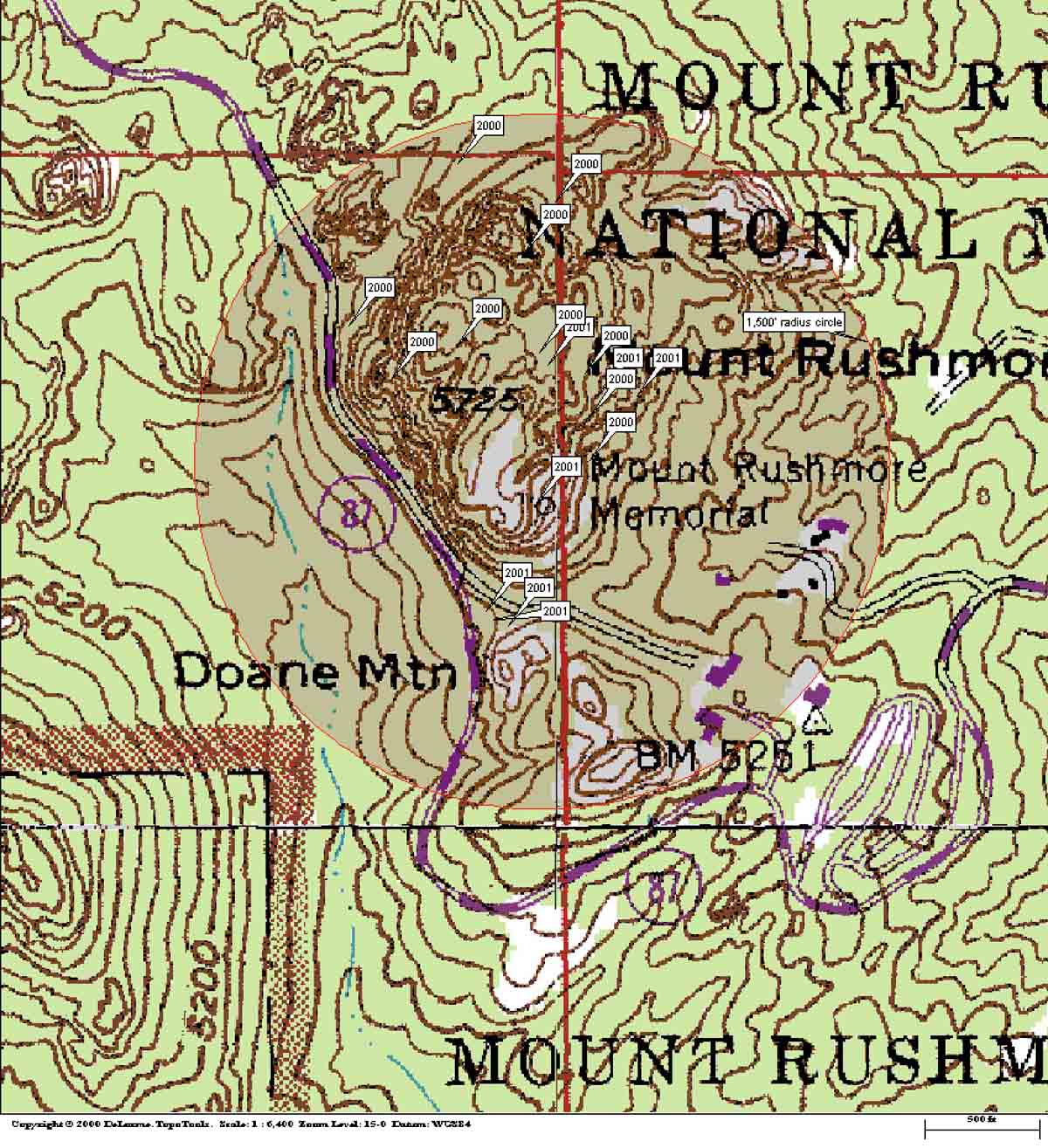
Since we are 10 days away from a large fireworks show over the sculpture on Mount Rushmore National Memorial, we should look back at fires caused by previous fireworks shows at the Memorial.
I was the Fire Management Officer for Mount Rushmore and six other National Park Service sites during the first 4 of the 11 years when fireworks were used 1998 through 2009. They were cancelled in 2002, 2010, and 2011 because of the danger of fire, and have not been used since.
In going through my files from 20 years ago, I found Incident Action Plans and other records for that time period. The fireworks show was a massive undertaking that drew thousands of spectators to the memorial. In 1999 and 2000 the Operations Section had seven functional groups with numerous employees assigned to each:
- Law Enforcement
- Emergency Medical Services
- Traffic/Parking
- Fire
- Aviation
- Security/Crowd
- Fireworks
In 2000 as the Group Supervisor for Fire and Aviation I had a total of 64 firefighters assigned. During those early years we used the helicopter that was on a fire contract at Yellowstone National Park to sling load the fireworks up to the launch site at the top of the mountain. Here is an excerpt from the Division Assignment List (ICS-204) for Aviation that year:
JUNE 29: The Helitack crew will report to MORU [Mount Rushmore National Memorial] at 0800 on June 29 to sort, weigh, and package the materials to be sling-loaded to the top of Mount Rushmore. The materials to be moved will include: fireworks and launch tubes 35,000 lbs., sand 16,000 lbs. The objective for this day is to have the material ready to begin movement by helicopter at 0600 on the following day, June 30. JUNE 30: Arrive at MORU at 0500 on JUNE 30 so that actual helicopter movement of the sling loads will begin at 0600 (sunrise is at 0514 MDT). JULY 4: Arrive at MORU at 0500 on JULY 4. On this day, all the material that must be ferried from the top of Mount Rushmore to the Helibase will have to be sorted and packaged and then flown down. The sand will remain on the top; only the _______lbs. of equipment needs to be flown down. The Helibase manager will determine the exact schedule for July 4 the day before, but an objective will be to complete the helicopter operations BEFORE the Memorial is busy with visitors.
We also used the helicopter to ferry bladder bags with water to the top of the mountain to be used to suppress fires started by the fireworks at night. There was no water source at the sculpture and a round trip up and down the steep, rocky slope to refill bladder bags took time.
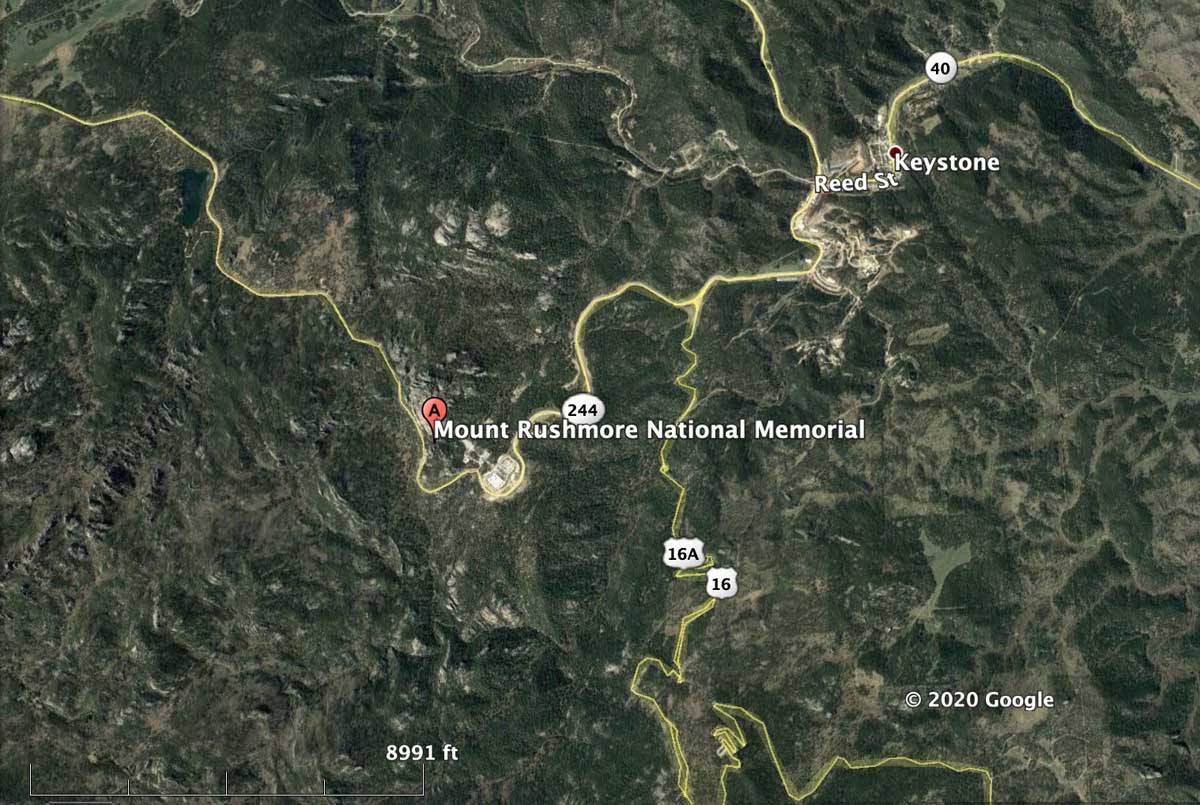
Mount Rushmore National Memorial is not only rock, as we have heard from the President. The park is 1,400 acres, about 1,000 of which is Ponderosa Pine. Beyond that is the Black Hills National Forest.
Hot embers are, of course, created by the explosions of the fireworks. Most of them cool before landing on the ground. But not all. At Mount Rushmore some of them fell on what firefighters call receptive fuels. A hot ember that lands on pine needles can start a forest fire.
During the fireworks show the scores of firefighters that were on hand had to remain out of what we called the Fallout Zone. After being launched hundreds of feet into the air a small percentage of the shells, which are larger than a softball, fail to explode and can cause serious injury if they fell on a firefighter. After the finale, the firefighters would move into their assigned areas to seek and suppress the fires. Picture the situation. It was dark, the terrain is very steep, and in many places rocky. Most of them carried five-gallon back pumps, water bladders, to put out the fires. The 45-pound back pumps were carried in addition to the regular firefighter gear which weighed more than 25 pounds. Among them, they had to cover an area about 3,000 feet in diameter in the dark, steep, rocky terrain. If more water was needed for the fires, it had to be carried up the steep slope.
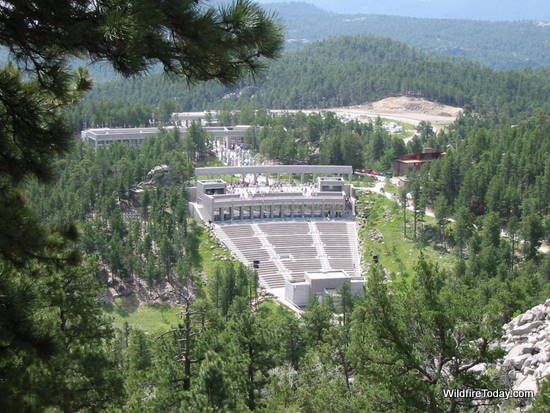
The Environmental Assessment completed by the National Park Service earlier this year that addressed resuming the fireworks stated that during the 11 years fireworks were used, 20 fires were caused by the fireworks. My records show that in one two-year period, 2000 to 2001, 17 fires were started by the Mount Rushmore fireworks — 10 in 2000 and 7 in 2001. I don’t have fire occurrence records for the other nine years of fireworks shows. Several of the fires were more than 1,000 feet away from the launch site. (See map at the top of the article, and note the 1,500′ radius [3,000′ diameter] circle centered on the launch site.)
A review of the 10 fires started by fireworks in 2000
On March 6, 2001 a meeting was convened to review the 10 fires started after the July 3, 2000 fireworks. In addition to myself, attendees included two representatives from Mount Rushmore National Memorial and two from the Park Service’s Regional office. Below is an excerpt from the memo written by the Acting Associate Regional Director, Park Operations and Education after the meeting:
“We reviewed the outcome of last year’s fireworks display where hundreds of burning embers hit the forest floor, resulting in seven reportable fires. One of which grew to several acres requiring a 20-person hand crew and a type III helicopter with bucket to bring it under control. One lost time injury and one injury that required first aid resulted from the suppression action. We also reviewed the prescription criteria that was part of the go-no-go decision process for approving the fireworks last year. We recommended, last year, that the fireworks would not be ignited if the probability of ignition was greater than 30 percent. With seven reportable fires last year, the probability of ignition will need to be lowered under that prescription.
“We also reviewed Director’s Order (DO) 53 where it states, “No display will be conducted where the discharge, failure to fire, faulty firing, or fallout of any fireworks or other objects would endanger persons, buildings, structures, forest, or brush.”
“Our approval of the fireworks display at Mount Rushmore will require the following:
- “A waiver of the National Park Service policy found in DO-53 on displaying fireworks over a “forest or brush” area.
- A newly completed and approved fire management plan (FMP) and accompanying National Environmental Policy Act (NEPA) compliance.
- An annual fireworks operational plan that outlines the mitigation actions in the event of a wildland fire.
“Within the FMP, you can outline the annual fireworks project, describe the prescription criteria that would be part of the go-no-go checklist (probability of ignition less than 10 percent, reduction of the dead and down fuel loading, opening of the canopy closure within the fallout zone, type 1 hot shot crew for night suppression operations within the fallout zone, and safe zones identified and described to both the public and employees). This project should be identified in the FMP and then hazard fuel dollars from FIREPRO could be applied for and be used to help do the fuel mitigation.” (emphasis added)
The next year, 2001, seven fires were caused by the fireworks.
Prescribed fire at Mount Rushmore
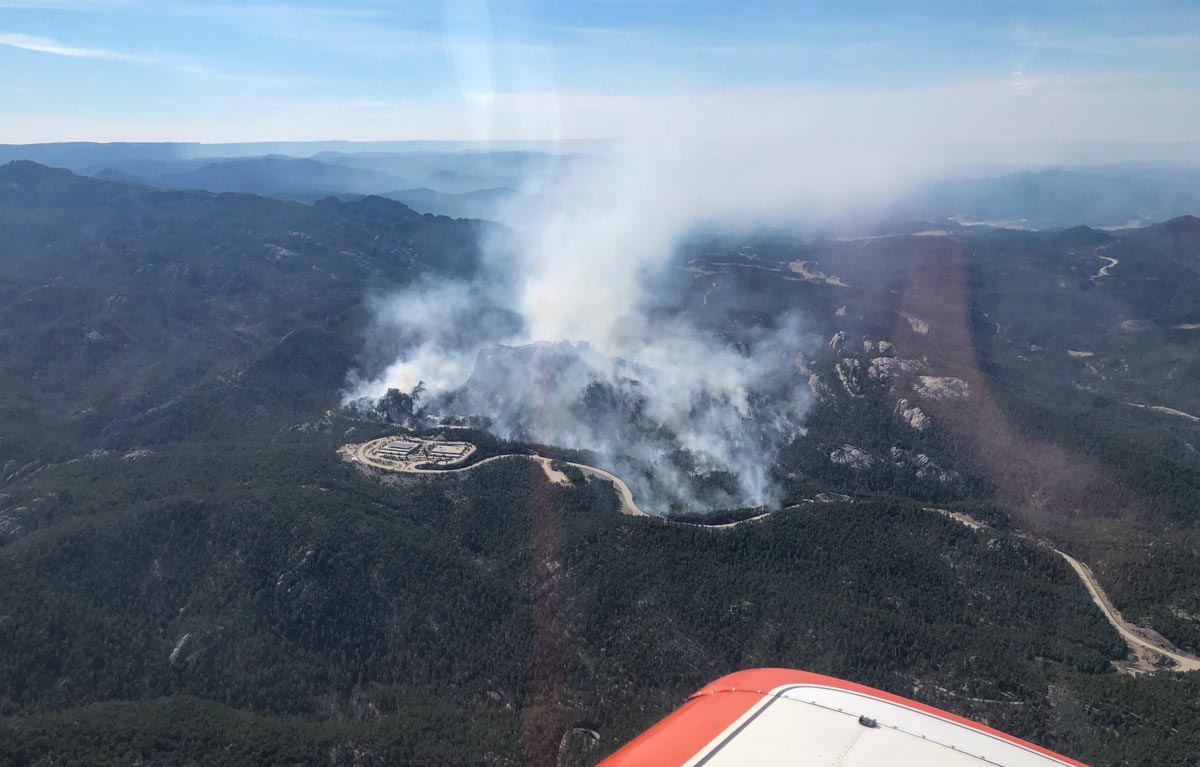
On April 29, 2020 the National Park Service conducted the first ever broadcast prescribed fire at Mount Rushmore. The objective, according to what one of the firefighters told photographer Paul Horsted, was to burn 260 acres in preparation for exploding fireworks over the sculpture on July 3.
The exact cost for the prescribed fire has not been tabulated, but Maureen McGee-Ballinger, the Memorial’s Chief of Interpretation and Education, told us the estimated expenditure was $30,000. It was conducted by a total of 54 personnel, including 24 firefighters from the National Park Service, 8 from the State of South Dakota, 6 from the State of North Dakota, 8 from the US Fish and Wildlife Service, 4 from the Department of Defense and 2 local volunteer fire department engines.
A prescribed fire will reduce the amount of fuel available for a wildfire started by fireworks or any other ignition source, but it can’t totally prevent an ignition. However, any resulting fire would burn with less intensity and resistance to control.
Some of the negative aspects of exploding fireworks over the sculpture, as learned from the 11 times it has been done in the past, include two other issues in addition to fires:
1. Carcinogens in the water
In 2016 the U.S. Geological Survey discovered that the ground and surface waters at Mount Rushmore are contaminated with perchlorate, a carcinogen which is a component of rocket fuels, fireworks, and explosives. They determined that the chemical came from the fireworks over the 12-year period during which they were used.
2. Garbage
The trash dropped by the exploding shells onto the Monument and the forest can never be completely picked up. Left on the ground are unexploded shells, wadding, plastic, ash, pieces of the devices, and paper; stuff that can never be totally removed in the very steep, rocky, rugged terrain.
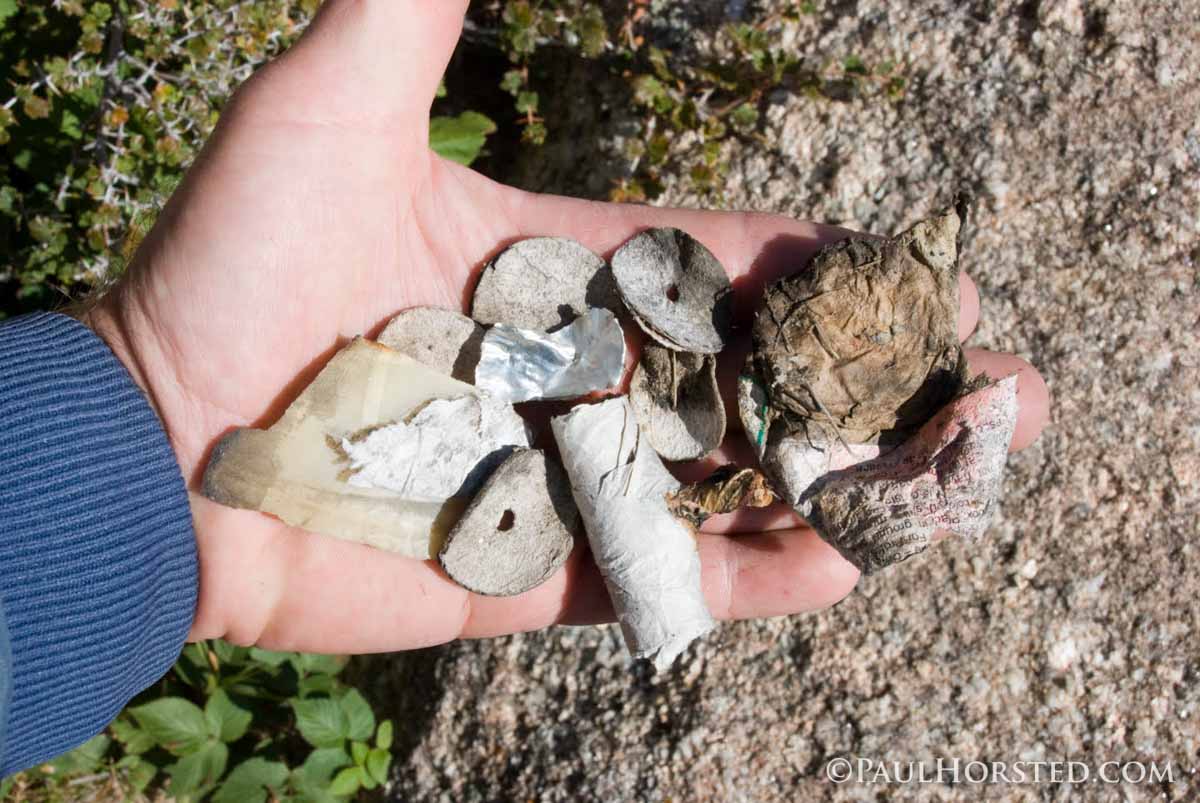

President Trump has planned this spectacular event as an uplifting, inspiring, exciting event for all Americans! He isn’t the first to plan fireworks there. There were fireworks displays during the Clinton, Bush and Obama administrations. There have been years when it was cancelled because of an increased fire hazard and I’m sure those in the know would recommend cancellation, if needed. The National Park Service has put in place measures to take care of any mishaps. Being a national park, there are always dangers of fires, so they always have to be prepared. They did a prescribed burn in April, so the debris on the ground would not be a big a hazard. Any time, any where there are fireworks displays, there is a danger of fire. Most of the fireworks debris that isn’t burned, is biodegradable and shouldn’t be of a long term concern. I pray that all will go well. Please pray. I wish I could be there, social distancing. Can you just imagine how exciting it is going to be? Please, please, everyone drop the politics, take a deep breath and be inspired.
Last time it rained in Phoenix, AZ was mid March. So, it is very dry everywhere and a fire danger. Hope no fireworks will be planned this year.
In June of my first season, the district FMO (Type 2 IC at that time) told us the easiest fire to fight is the one we don’t start; don’t put fire down when and where we don’t want it. That was in 1997 in R1. I’ve lived by those words as an RXB2. True words then, and in 2020, regardless of your agency or political affiliation. Best wishes, and take extra care this season. Thank you.
All so someone can have the greatest firework display ever. I thought D.C. has a pretty spectacular one, tho I’ve never been to see it.
Brilliant idea for this summer (“I’m just joking!)…hope nothing goes awry, and nobody gets hurt.